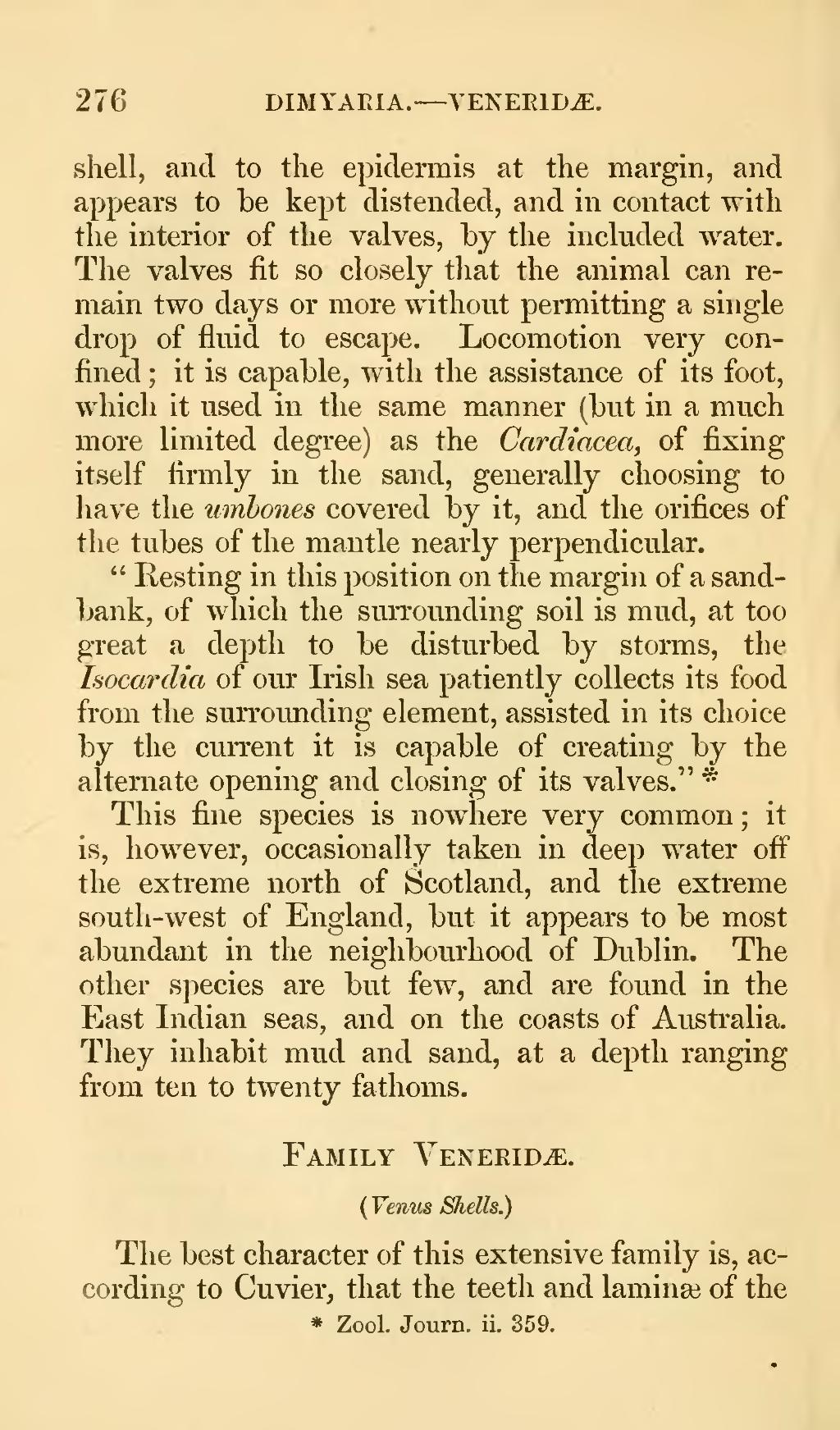shell, and to the epidermis at the margin, and appears to be kept distended, and in contact with the interior of the valves, by the included water. The valves fit so closely that the animal can remain two days or more without permitting a single drop of fluid to escape. Locomotion very confined; it is capable, with the assistance of its foot, which it used in the same manner (but in a much more limited degree) as the Cardiacea, of fixing itself firmly in the sand, generally choosing to have the umbones covered by it, and the orifices of the tubes of the mantle nearly perpendicular.
"Resting in this position on the margin of a sandbank, of which the surrounding soil is mud, at too great a depth to be disturbed by storms, the Isocardia of our Irish sea patiently collects its food from the surrounding element, assisted in its choice by the current it is capable of creating by the alternate opening and closing of its valves."[1]
This fine species is nowhere very common; it is, however, occasionally taken in deep water off the extreme north of Scotland, and the extreme south-west of England, but it appears to be most abundant in the neighbourhood of Dublin. The other species are but few, and are found in the East Indian seas, and on the coasts of Australia. They inhabit mud and sand, at a depth ranging from ten to twenty fathoms.
Family Veneridæ.
(Venus Shells.)
The best character of this extensive family is, according to Cuvier, that the teeth and laminæ of the
- ↑ Zool. Journ. ii. 359.
